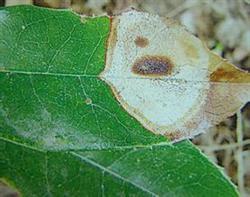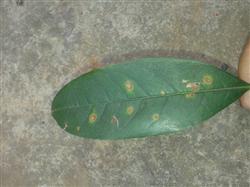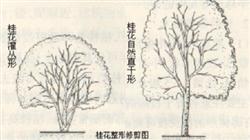How to control the brown spot of sweet-scented osmanthus

Sweet-scented osmanthus brown spot is a very common disease, which seriously leads to defoliation of the whole plant and affects flowering and ornamental. It has long been reported in Britain, the United States, Japan and other countries. It also occurs frequently in Shanghai, Nanjing, Hangzhou, Jinan, Beijing, Fuzhou, Guilin, Xiamen, Guangzhou, Taiwan and other provinces and cities. Symptomatic pathogens mainly infect leaves. The damaged leaves began to appear small macula, and then gradually changed from yellowish brown to grayish brown. The disease spot was nearly round or irregular, or was polygonal due to the limitation of leaf veins. The lesion is 2mm in diameter and has a yellow halo outside. The disease department produces black mildew spots in wet weather, which are the conidiophores and conidia of the pathogen. The brown spot of sweet-scented osmanthus is caused by Cercospora osmanthicola, which belongs to the subphylum Trichospora, Cercosporaceae and Cercosporaceae. The conidia of the pathogen are brown and nearly round, and the conidia are attached to them in bundles, olive brown, unbranched, with few septum; conidia oblong, nearly colorless to light brown, straight or slightly curved, with a size of 15 ~ 58 × 2.8 ~ 3.7 microns. The pathogen of sweet-scented osmanthus brown spot overwintered on diseased plants and fallen leaves with mycelia and became the source of infection at the beginning of the next year. Conidia are produced in late March every year and begin to infect. Conidia are transmitted by airflow and raindrops and can invade directly or from wounds and natural orifices. Old leaves are more susceptible than young leaves. Brown spot occurred from April to October and subsided after November. High temperature and humidity are beneficial to the disease. There are differences in resistance among varieties. generally speaking, the disease resistance of Dangui is stronger than that of Jin Gui and Yingui. Prevention and treatment method 1. Combined with pruning, removal of diseased leaves, removal of underground fallen leaves, concentrated burning or deep burial, reducing the source of primary infection for two consecutive years, it will be effective. two。 Strengthen cultivation management, avoid stagnant water in soil, pay attention to ventilation and light transmission. Increase the application of humus fertilizer and potash fertilizer to improve plant disease resistance. 3. During the onset of the disease, the Bordeaux solution can be sprayed with 1V 2v 100 lime Bordeaux solution, or 50% benzoate wettable powder 1000 × 2000 times, or 20% azine 500 times 800 times, or 50% benzoylamine 1000 times. Click to get more sweet-scented osmanthus planting techniques
- Prev

How to control brown spot of sweet-scented osmanthus
Sweet-scented osmanthus brown spot is a common disease of sweet-scented osmanthus, which is caused by subphylum fungus infection. Sweet-scented osmanthus plants are planted in ground and potted plants. Light cases affect the ornamental effect, and serious ones cause plant death. Most of the symptoms occurred in the leaves, and most of them developed from the leaf tip and edge to the whole leaf. The disease spot is shallow at the beginning.
- Next

How to propagate Osmanthus fragrans
If you do not pay attention to pruning and shaping for a long time, the cultivated sweet-scented osmanthus will grow into a deformed tree. For this kind of tree, it should be pruned pertinently. (1) plants that are very tall and lack of branches and leaves in the lower part of the trunk can be amputated from the upper part of the trunk, such as 2 / 3 or 3 / 4, to promote new branches in the lower trunk. It is found that there are many branches and positions in the coming year.
Related
- Fuxing push coffee new agricultural production and marketing class: lack of small-scale processing plants
- Jujube rice field leisure farm deep ploughing Yilan for five years to create a space for organic food and play
- Nongyu Farm-A trial of organic papaya for brave women with advanced technology
- Four points for attention in the prevention and control of diseases and insect pests of edible fungi
- How to add nutrient solution to Edible Fungi
- Is there any good way to control edible fungus mites?
- Open Inoculation Technology of Edible Fungi
- Is there any clever way to use fertilizer for edible fungus in winter?
- What agents are used to kill the pathogens of edible fungi in the mushroom shed?
- Rapid drying of Edible Fungi

